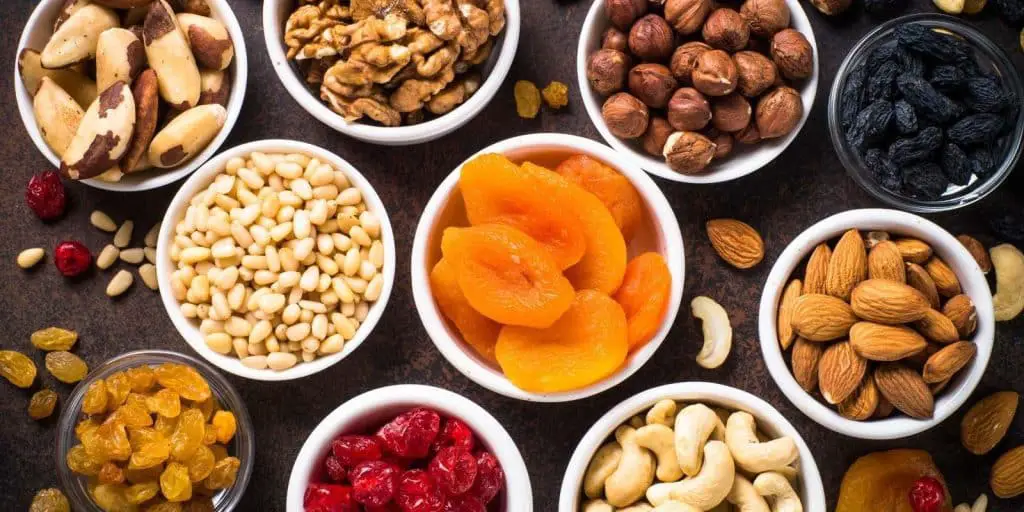A study, published in Cell Metabolismis the first large-scale comparison of how different people produce insulin in response to each of the three macronutrients: carbohydrates (glucose), proteins (amino acids), and fats (fatty acids).
Insulin production
When it comes to managing blood sugar levels, most people think of counting carbs. But new research from the University of British Columbia shows that, for some, it may be just as important to consider the protein and fat in their diet.
The findings reveal that the production of the hormone insulin, which regulates blood sugar, is much more dynamic and personalized than previously thought, highlighting for the first time a subset of the population that is hypersensitive to fatty foods.
“Glucose is the known driver of insulin, but we were surprised to see such a high level of variability, with some individuals showing a strong response to protein and others to fat, which has never been characterized before,” said lead author Dr. James Johnson, a professor of cellular and physiological sciences at UBC.
“Insulin plays an important role in human health, in everything from diabetes, where it is too low, to obesity, weight gain, and even some cancers, where it is too high. These discoveries lay the foundation for personalized nutrition that could transform the way we treat and manage a range of conditions.”
For the study, researchers tested pancreatic islets from 140 deceased donors, both men and women, across a wide age range. The islets were exposed to each of three macronutrients, while researchers measured insulin response along with 8,000 other proteins.
Although most donor islet cells had their strongest insulin response to carbohydrate, about 9% responded most strongly to protein, while another 8% of donor cells responded more to fat than to any other nutrient, even glucose.

“This research challenges the long-held belief that fat has negligible effects on insulin release in everyone,” says first author Dr. Jelena Kolic, a research associate in the Johnson lab at UBC. “With a better understanding of the individual factors that determine a person’s insulin production, we could potentially provide personalized dietary guidance that would help people better manage their blood sugar and insulin levels.”
The research team also examined a subset of islet cells from donors with type 2 diabetes. As expected, these donor cells had a low insulin response to glucose. However, the researchers were surprised to see that their insulin response to protein remained largely intact.
“This really strengthens the case that high-protein diets may have therapeutic benefits for patients with type 2 diabetes and highlights the need for further research into protein-stimulated insulin secretion,” said Dr. Kolic.
The team conducted a comprehensive analysis of protein and gene expression on pancreatic islet cells, providing insight into the molecular and cellular features that shape insulin production. In the future, the researchers say, it may be possible to use genetic testing to determine which macronutrients are most likely to trigger a person’s insulin response.
As a next step, the researchers hope to expand their work into clinical studies that will test insulin response to the macronutrient trio in a real-world setting and begin developing personalized nutritional approaches based on the findings.
Regenerating insulin in pancreatic stem cells
Researchers are focusing on the bigger challenge: regenerating insulin in pancreatic stem cells and replacing the need for regular injections of the hormone.
Researchers at the Baker Heart and Diabetes Institute have demonstrated in a paper published in Signal Transduction and Targeted Therapy that newly-generated insulin cells can respond to glucose and produce insulin following stimulation with two U.S. Food and Drug Administration-approved drugs in as little as 48 hours.
Furthermore, they confirmed that this pathway of awakening of insulin-producing cells is viable in the age groups between 7 and 61 years, providing very useful information on the mechanisms underlying beta cell regeneration.
Using pancreatic cells derived from donor children and adults with type 1 diabetes and from a non-diabetic person, a team led by Professor Sam El-Osta has demonstrated how insulin-producing cells, destroyed in people with type 1 diabetes, can be regenerated into cells that sense glucose and functionally secrete insulin.

In this latest study from the Human Epigenetics team, they demonstrate that small molecule inhibitors currently used for rare cancers and approved by the US FDA can rapidly restore insulin production in pancreatic cells destroyed by diabetes.
Although current drug options for treating diabetes help control blood glucose levels, they do not prevent, stop, or reverse the destruction of insulin-secreting cells.
This new therapeutic approach has the potential to become the first disease-modifying treatment in type 1 diabetes by facilitating the production of glucose-responsive insulin using a patient’s remaining pancreatic cells, potentially allowing people with diabetes to achieve independence from 24-hour insulin injections.
This disease-modifying treatment also holds promise for the significant number of Australians with insulin-dependent diabetes, accounting for 30% of people with type 2 diabetes.
The development of new drug therapies to restore pancreatic function faces the harsh reality of a shortage of donor organs.

“We see this regenerative approach as an important step toward clinical development,” said Professor El-Osta. “So far, the regenerative process has been incidental and, in the absence of confirmation, more importantly, the epigenetic mechanisms that govern such regeneration in humans remain poorly understood,” he said.
This research demonstrates that 48 hours of stimulation with small molecule inhibitors is sufficient to restore insulin production from damaged pancreatic cells.
JDRF Senior Research Fellow Dr. Keith Al-Hasani said the next step was to study the new regenerative approach in a preclinical model. The goal is to develop these inhibitors as drugs to restore insulin production in people with diabetes.
As the work progresses, so does the need for rapid translation. More than 530 million adults live with diabetes, and that number is expected to rise to 643 million by 2030.
reactivation of beta-like cells in the pancreas to produce insulin
A proof-of-concept study demonstrates that human pancreatic-derived ductal cells can be influenced by pharmacological stimulation to regenerate functionally insulin-releasing beta-like cells, offering new hope for people with diabetes.
The preclinical study, led by Safiya Naina Marikar of the Baker Heart and Diabetes Institute and published in the journal Clinical Epigenetics, demonstrates how drugs can influence pancreatic progenitor cells, inducing them to reactivate and transform into insulin-producing beta cells, by inhibiting the enzyme EZH2.
With type 1 diabetes, damage and destruction of beta cells means that the pancreas produces little or no insulin. This causes glucose to build up in the bloodstream instead of entering cells. This buildup of glucose in the blood is called hyperglycemia, with the body unable to use glucose for energy.

Researchers have spent a lot of time and energy looking at alternatives such as cell replacement therapy and pancreas transplantation, a limited potential option due to the stark reality of a shortage of donated organs. This approach examines the regenerative capacity of pancreatic cells by stimulating ductal stem cells with small molecule inhibitors as an alternative strategy to restore insulin production for people with diabetes.
The drugs used in the study include a synthetic drug used primarily as a cancer therapy (with overexpression of EZH2 found in tumors) and a naturally occurring drug that is being tested as a treatment for inflammatory conditions.
Monash University PhD student Safiya Naina Marikar, who works at the Baker Institute in Professor Sam El-Osta’s Human Epigenetics Program, says this study suggests that reprogrammed cells are able to produce insulin and perform critical functions such as secreting insulin in response to glucose stimulation.
Professor El-Osta says this exciting epigenetic work by early-career scientists could have major implications for improving the lives of people with diabetes for years to come.
Although further studies are needed to analyze the mechanism and identity of cellular targets to improve weight reduction methods in insulin-dependent diabetes, these findings open an exciting new avenue for beta cell regeneration as a possible alternative source to islet transplantation for people with diabetes and fill this therapeutic gap.
By stimulating the nerves connected to the pancreas, it is possible to regenerate the cells that produce insulin
Insulin is a hormone that reduces blood glucose levels. The only cells that produce it are pancreatic beta cells (β cells), and a decrease in these cells is a major cause of diabetes. Although therapies to increase pancreatic β cells are eagerly awaited, a strategy that can increase β cells has not yet been developed.
In a promising advance, a research team from Tohoku University School of Medicine has revealed that stimulation of autonomic vagal nerves connected to the pancreas can improve the function and even increase the number of pancreatic β cells in mice.

“Using optogenetics, we were the first to develop a way to individually stimulate the vagus nerve leading to the pancreas in mice,” says Imai. “This new method led to a significant increase in the amount of insulin in the blood when sugar was given, indicating improved β-cell function.”
Further stimulation of this nerve for two weeks more than doubled the original number of β cells. Stimulation of the pancreatic vagal nerves activated the β cells in both quality and quantity.
When Imai and his colleagues applied this method to a mouse model of insulin-deficient diabetes, regenerating pancreatic β cells improved diabetes in these mice. This represents the first successful treatment of diabetes in mice by stimulating vagal nerves connected to the pancreas.
“We hope that our findings will lead to the development of new strategies and preventive methods for diabetes,” Imai adds. “We also expect that they will advance our understanding of the mechanisms that regulate the function and number of pancreatic β cells, as well as the causes of diabetes.”
#nutrients #activate #insulin #vary #person #person